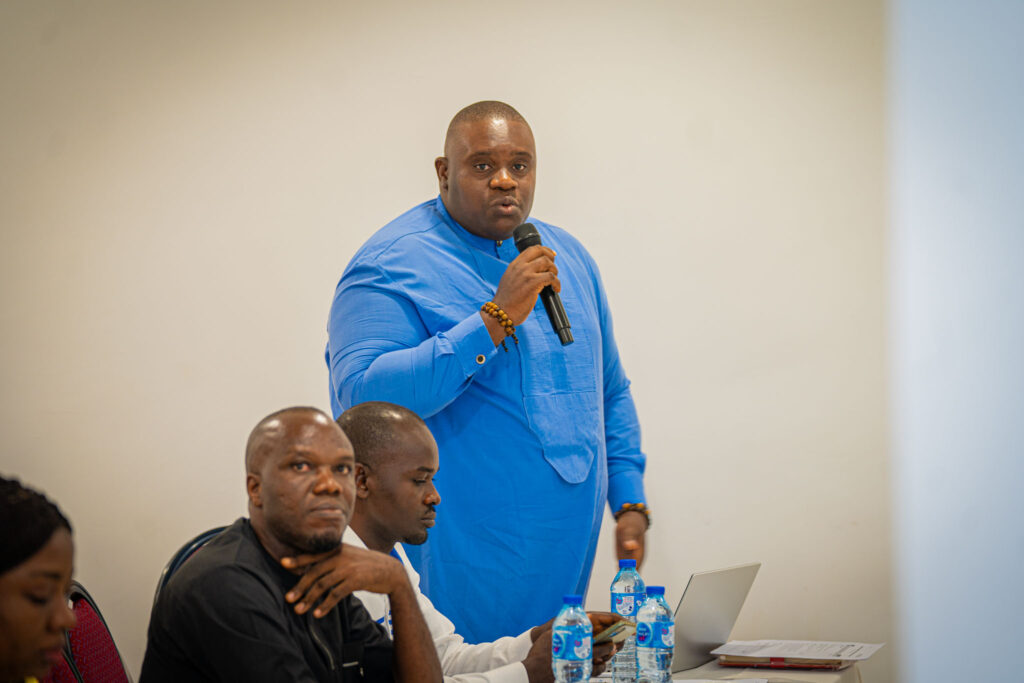__By Edidiong Dickson

As we began our descent into Abuja, the pilot announced to everyone aboard that the descent would be bumpy because of the heatwave. Scenarios such as this have become frequent due to climate change. It was unsurprising that on this occasion, I was in Abuja to attend a 3-day workshop and stakeholder engagement on methane emission reduction in Nigeria. Methane is a greenhouse gas (GHG), and the scientific consensus is that human-induced emissions of GHGs have exacerbated the earth’s temperature and the climate crisis, which has now morphed into an existential threat.
While the causal relationship between emissions and climate change is no longer in doubt, there appears to be a fixation on carbon emissions in most analyses. This carbon-biased conversation ignores that methane has a global warming potential of 28 to 36 times higher than carbon dioxide and poses a greater threat in the near to short term. Despite the higher global warming potential of methane, it is classified as a short-lived climate pollutant (SLCP), meaning that, unlike carbon, methane remains in the atmosphere for a relatively short time – about 12 years – and with targeted action, the concentration of methane in the atmosphere can easily be reduced. If such a response can be triggered globally, it represents a major push in ongoing climate mitigation efforts.
In Africa, the oil and gas sector accounts for about 68 percent of methane emissions in the energy sector. This understanding influenced the Center for Journalism Innovation and Development (CJID) and the Natural Resource Governance Institute (NRGI) the event organizers mentioned at the outset to convene the 3-day workshop and stakeholder engagement from March 13 to 15 2024. This meeting brought a mix of stakeholders to the room from policymakers, energy sector regulators, the media, and civil society actors to spur action on methane emission reduction.
As part of its commitments to climate change response and energy sector governance, Nigeria has developed policy documents and even legislation that could help reduce methane emissions. Some of these include the Nationally Determined Contributions (NDCs), Country Methane Abatement Tool (CoMAT), Petroleum Industry Act (PIA), and requirements mandating energy sector operators to submit quarterly reports on fugitive emission and greenhouse gas monitoring. Despite this enabling legislative and policy context for tackling methane emissions, implementation has been bumpy and rather unimpressive.
The workshop and stakeholder engagement highlighted that reducing methane emissions is truly in Nigeria’s interest for the following reasons;
Competitive projects
Investors are increasingly interested in the emission footprint of the projects they are investing in. If the country fails to take action to reduce emissions, oil and gas projects will lose their competitive edge due to investor pressure. Closely related to this are new import rules such as that which will take effect in the European Union from 2025, where oil and gas imports with high emission footprint would be banned or face high tariffs making them unattractive. To spur investor confidence in oil and gas projects in the country at a time when the government is keen on raising revenues and to circumvent restrictive import rules, the Country must take profound steps to address methane emissions.
Economic opportunity from waste
Natural gas is mostly made up of methane. Therefore, methane emission is essentially a valuable economic resource. Any time gas is vented, lost through fugitive emissions or flared, the country loses money. The World Bank estimates that between 2018 and 2022, the sales value of flared gas was 4 billion dollars. Further, figures from the International Energy Agency (IEA) indicate that Nigeria can reduce 40 per cent of emissions at no additional cost.
Support energy access
Africa has about 640 million people without energy access, many of which people are Nigerians. Fittingly the country has in place initiatives such as the gas commercialization plan and a decade of gas initiative, these initiatives were conceptualized to expand energy access for many Nigerians while reducing the waste associated with venting and flaring. Failure to follow through with these initiatives which are in themselves part of a broader strategy to reduce methane emissions, undercuts government plans to expand energy access for millions of people.
Improve local health and environment
A 2022 study by the World Bank shows significant associations between gas flaring and respiratory illnesses. Considering that Nigeria flares gas the most on the continent, and about 2 million people live within 4 kilometers of a flare site, the impact on human health is concerning. Beyond impacts on human health GHG emissions wreak havoc on the environment leading to biodiversity loss, poor crop yield, etc.
So for Nigeria, methane emission reduction is much more than a climate change mitigation plan; it is a social and economic policy response that is in the country’s best interest.
Representing my organization at the event exposed me to new ideas and advocacy opportunities in support of the climate and energy justice work that we do at Policy Alert. The workshop left me with further sharpened advocacy skills on the subject and brimming with a commitment to deepen engagement with relevant stakeholders. The event closed with my mind drifting again to bumpy descents and heatwaves, and I couldn’t wait to get home to some urgent action on the bumpy business of methane emissions reduction in Nigeria.
.

